|
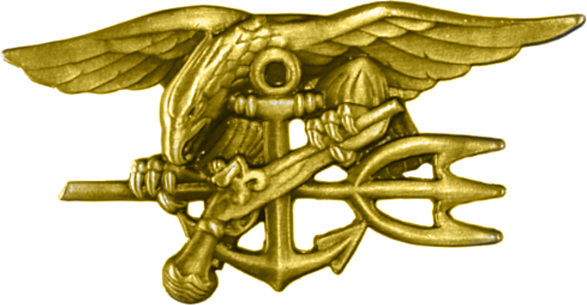
US
Navy SEALs insignia
The
United States Navy Sea, Air, and Land (SEAL) Teams, commonly known as Navy SEALs, are the U.S. Navy's primary special operations force and a component of the Naval Special Warfare Command. Among the SEALs' main functions are conducting small-unit special operation missions in maritime, jungle, urban,
arctic, mountainous, and desert environments. SEALs are typically ordered to capture or kill high-level targets, or to gather intelligence behind enemy lines. SEAL team personnel are hand-selected, highly trained, and possess a high degree of proficiency in direct action (DA), and special reconnaissance (SR), among other tasks like sabotage, demolition, intelligence gathering, and hydro-graphic reconnaissance, training, and advising friendly militaries or other forces.
Depending on the availability of platforms, threat level, and environment, different methods can be used for the insertion and extraction of SEALs into a target location. This could include nuclear-powered cruise missile submarines equipped with dry deck shelters, SDV submarines, surface vessels, surface swimming, or other vehicles.
All active SEALs are members of the U.S. Navy. The CIA's highly secretive and elite Special Operations Group (SOG) recruits operators from SEAL Teams, with joint operations going back to the MACV-SOG during the Vietnam War. This cooperation still exists today, as evidenced by military operations in
Iraq and
Afghanistan.
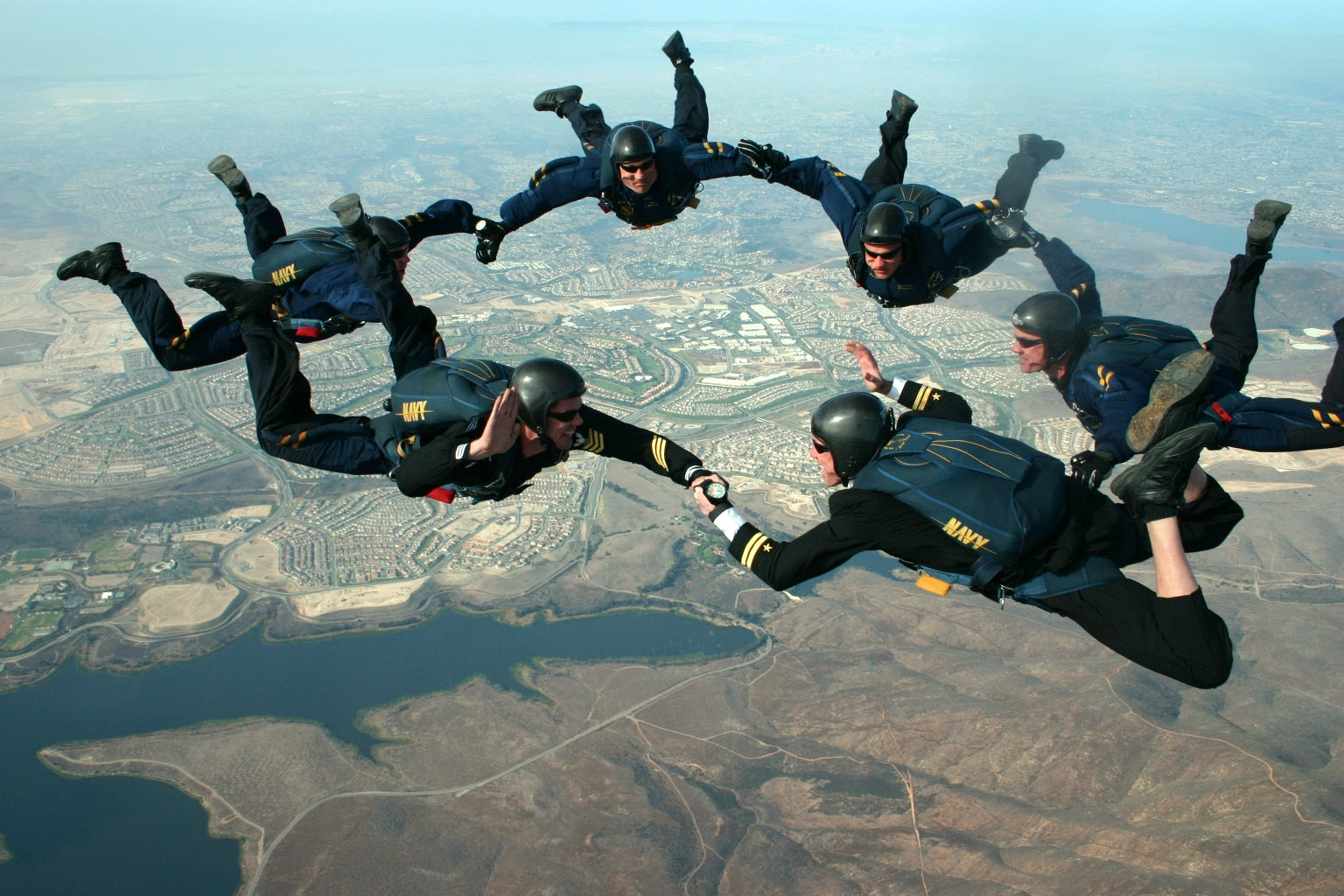
SEALs
- Leap Frog training, aviation parachute training San Diego
UNDERWATER DEMOLITION TEAMS
The first units designated as Underwater Demolition Teams were formed in the
Pacific Theater. Rear Admiral Kelly Turner, the Navy's top amphibious expert, ordered the formation of Underwater Demolition Teams in response to the failed invasion at Tarawa and the Marines' inability to clear the surrounding
coral reefs with Landing Vehicle Tracked (LVTS). Turner recognized that amphibious operations required intelligence of underwater obstacles. The personnel for these teams were mostly local Seabees or others that had started out in the NCDUs. UDT training was at the Waipio Amphibious Operating Base, under V Amphibious Corps operational and administrative control. Most of the instructors and trainees were graduates of the Fort Pierce NCDU or Scouts and Raiders schools, Seabees, Marines, and Army soldiers.
Because they were so integral to the success of missions in the Pacific during the war, the
U.S. Navy did not publicize the existence of the UDTs until post-war. During
WWII the Navy did not have a rating for the UDTs nor did they have an insignia. Those men with the CB rating on their uniforms considered themselves Seabees that were doing underwater demolition. They did not call themselves "UDTs" or "Frogmen" but rather "Demolitioneers" which had carried over from the NCDUs and Lt Cdr Kauffman's recruiting efforts from the Seabee dynamiting and demolition school. The next largest group of UDT volunteers came from the joint Army-Navy Scouts and Raiders school that was also in Fort Pierce and the Navy's bomb disposal school in the Seabee-dominated teams.
As the first to often make amphibious landings, the UDTs began making signs to welcome the Marines, indicating they had been there first, to foster the continued friendly rivalry. In keeping with UDT tradition, UDT 21 created a sign to greet the Marines landing in Japan. For Operation Beleaguer UDT 9 was deployed with the III Amphibious Corps to Northern
China. In 1965 the UDT 12 put up another beach sign to greet the Marines at Da Nang.
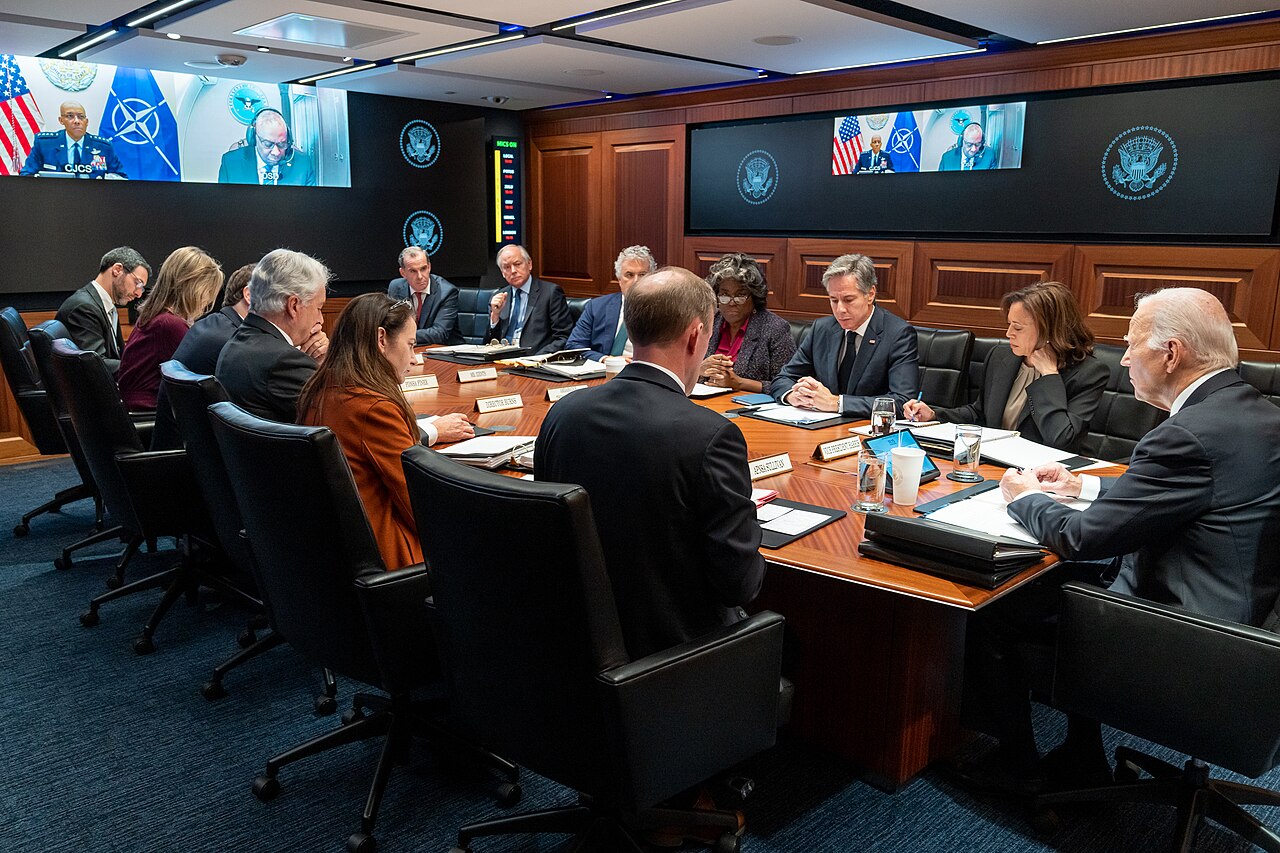
The
Situation Room, US President Joe Biden being briefed on attacks on
Israel
UNDERWATER DEMOLITION SELECTION AND TRAINING
Before getting accepted into Basic Underwater Demolition/SEAL (BUD/S) training, a prospective candidate must pass a certain number of both mental and physical requirements. These tests include: Pre-enlistment medical screening, ASVAB, AFQT, C-SORT, and PST. Then, the candidate must get a SEAL contract by passing the SEAL
Physical Screening Test: 500-yard
swim in 12:30, 50 push-ups in 2 minutes, 50 sit-ups in 2 minutes, 10 consecutive pull-ups in 2 minutes, and a 1.5-mile run in 10:30.
Candidates receiving a passing score may then be admitted into training to become Navy SEALs. SEAL training is extremely rigorous. The attrition rate fluctuates, but averages at about 80 percent.
The average candidate spends over a year in a series of formal training courses before being awarded the Special Warfare Operator Naval Rating and the Navy Enlisted Classification (NEC) 5326 Combatant
Swimmer (SEAL) or, in the case of commissioned naval officers, the designation Naval Special Warfare (SEAL) Officer.
Navy SEAL training pipeline:
- 8-week Naval Recruit Training
- 8-week Naval Special Warfare Prep School (Pre-BUD/S)
- 3-week BUD/S Orientation
- 24-week Basic Underwater Demolition/SEAL Training (BUD/S)
- 3-week Army airborne School
- 26-week SEAL Qualification Training (SQT)
Upon graduation from SQT, trainees receive the U.S. Navy SEAL Trident, designating them as Navy SEALs. They are subsequently assigned to a SEAL Team or SEAL Delivery Vehicle (SDV) Team and begin 18 months of predeployment training before they are considered deployable. This training consists of:
- 6-month Professional Development – Individual Specialty Training (ProDev)
- 6-month Unit Level Training (ULT). ULT is unit training conducted by each Groups Training Detachment. Core unit training blocks are Air Operations, Land Warfare, Maritime, Urban and Special Reconnaissance.
- 6-month Squadron Integration Training (SIT)
Those enlisted SEALs with a medical rating will first attend the Special Operations Combat Medic Course for 6 months in Fort Bragg, North
Carolina before joining a team in order to become a SEAL/Special Operator Corpsman. Those pursuing Officer positions first attend the Junior Officer Training Course (JOTC) to learn about operations planning and how to perform team briefings. In total it can take over two-and-a-half years to completely train a Navy SEAL for his first deployment.
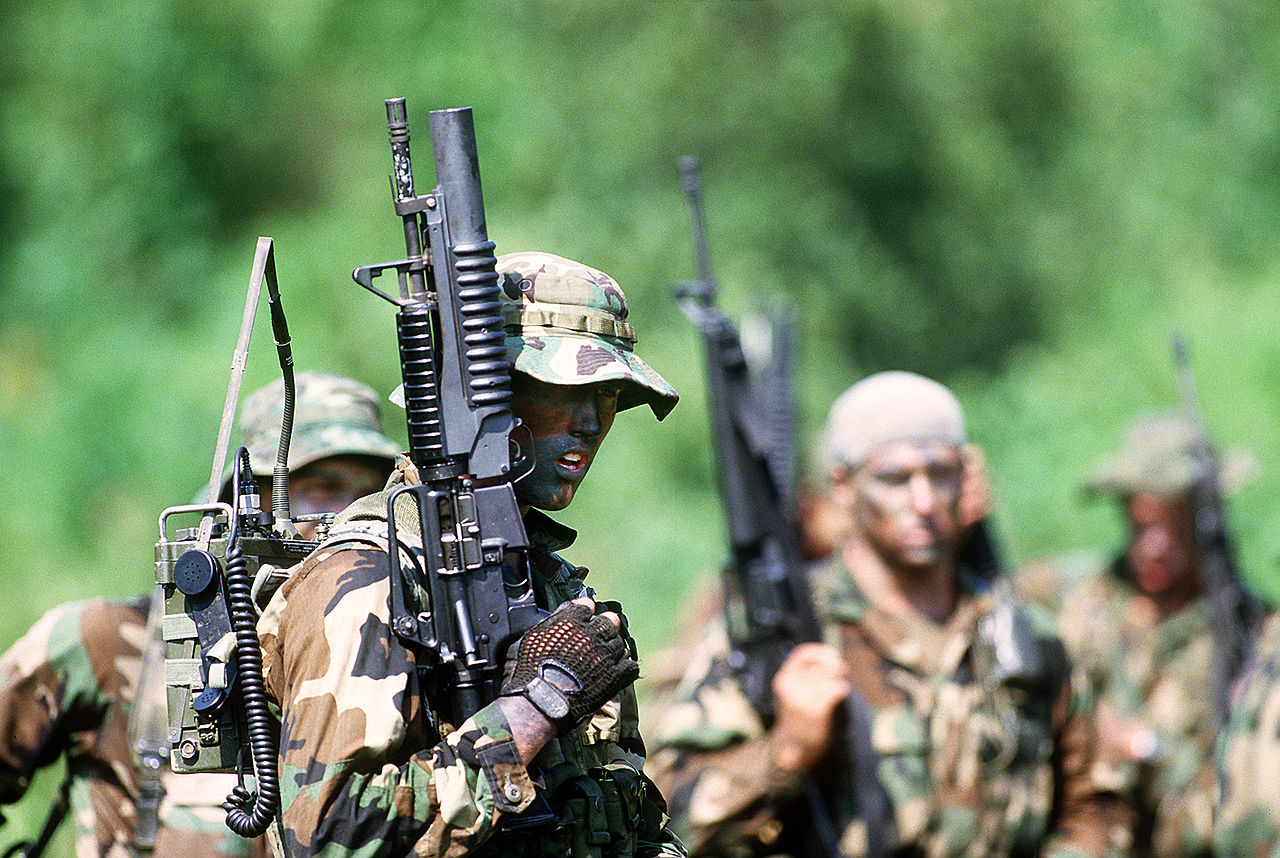
SEALs
- Special tactical warfare training
BIRTH OF THE SEALS
President John F. Kennedy, aware of the situation in Southeast Asia, recognized the need for unconventional warfare and special operations as a measure against guerrilla warfare. In a speech to Congress on 25 May 1961, Kennedy spoke of his deep respect for the United States Army Special Forces. While his announcement of the government's plan to put a man on the moon drew most of the attention, in the same speech he announced his intention to spend over $100 million to strengthen U.S. special operations forces and expand American capabilities in unconventional warfare. Some people erroneously credit President Kennedy with creating the Navy SEALs. His announcement was actually only a formal acknowledgement of a process that had been underway since the Korean War.
The Navy needed to determine its role within the special operations arena. In March 1961, Admiral Arleigh Burke, the Chief of Naval Operations, recommended the establishment of guerrilla and counter-guerrilla units. These units would be able to operate from sea, air or land. This was the beginning of the Navy SEALs. All SEALs came from the Navy's Underwater Demolition Teams, who had already gained extensive experience in commando warfare in Korea; however, the Underwater Demolition Teams were still necessary to the Navy's
amphibious force.
The first two teams were formed in January 1962 and stationed on both US coasts: Team One at Naval Amphibious Base Coronado, in San Diego, California and Team Two at Naval
Amphibious Base Little Creek, in Virginia Beach, Virginia. Formed entirely with personnel from UDTs, the SEALs mission was to conduct counter guerilla warfare and clandestine operations in maritime and riverine
environments. Men of the newly formed SEAL Teams were trained in such unconventional areas as hand-to-hand combat, high-altitude parachuting, demolitions, and foreign languages. The SEALs attended Underwater Demolition Team replacement training and they spent some time training in UDTs. Upon making it to a SEAL team, they would undergo a SEAL Basic Indoctrination (SBI) training class at Camp
Kerry in the Cuyamaca Mountains. After SBI training class, they would enter a platoon and conduct platoon training.
According to founding SEAL team member Roy Boehm, the SEALs' first missions were directed against communist
Cuba. These consisted of deploying from submarines and carrying out beach reconnaissance in a prelude to a proposed US amphibious invasion of the island. On at least one occasion, Boehm and another SEAL had smuggled a
CIA agent ashore to take pictures of Soviet nuclear missiles being unloaded on the
dockside.
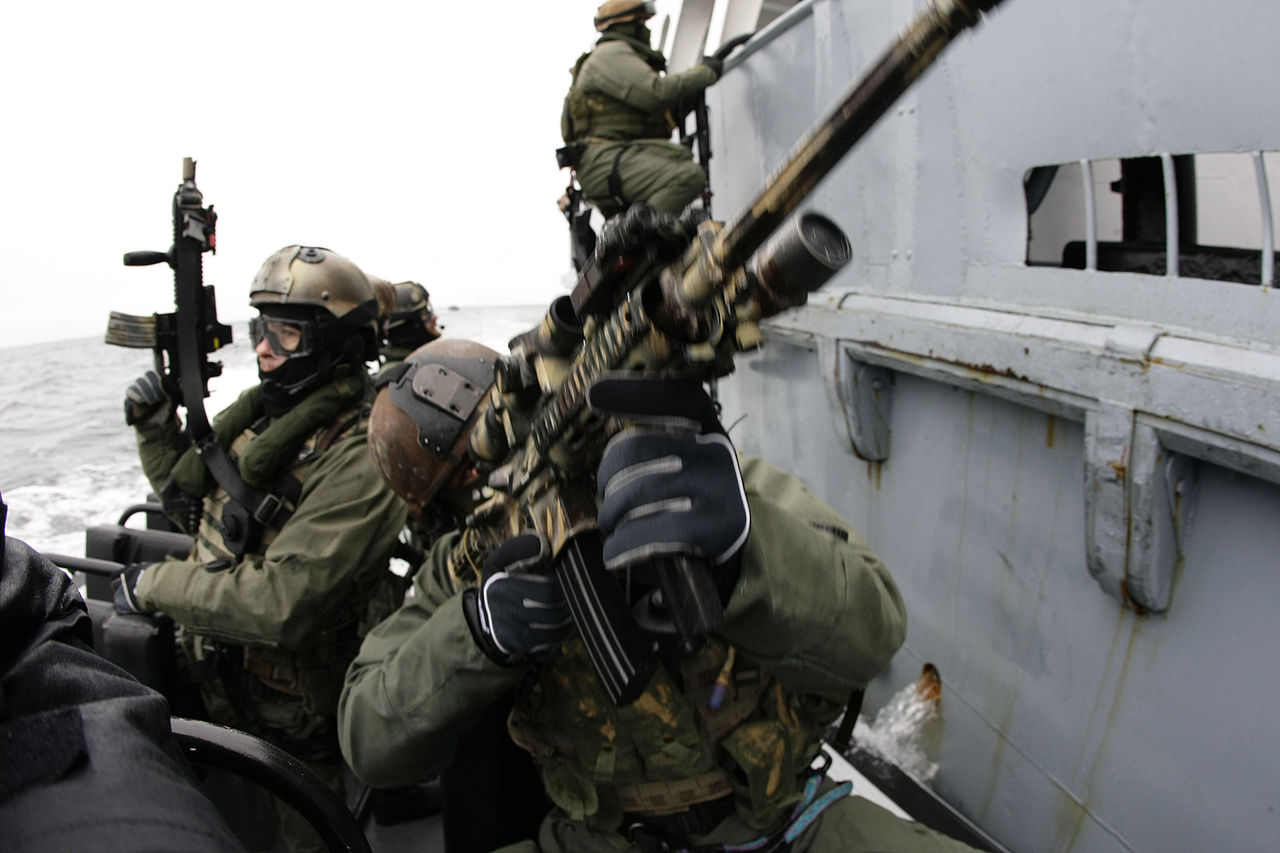
SEAL naval warfare boarding skills
The Pacific Command recognized Vietnam as a potential hot spot for unconventional forces. At the beginning of 1962, the UDTs started hydrographic surveys and along with other branches of the US Military, the Military Assistance Command Vietnam (MACV) was formed. In March 1962, SEALs were deployed to South
Vietnam as advisors for the purpose of training Army of the Republic of Vietnam commandos in the same methods they were trained themselves.
The Central Intelligence Agency began using SEALs in covert operations in early 1963. The SEALs were later involved in the
CIA sponsored Phoenix Program where it targeted Vietcong (VC) infrastructure and personnel for capture and assassination.
The SEALs were initially deployed in and around Da Nang, training the South Vietnamese in combat diving, demolitions and guerrilla/anti-guerrilla tactics. As the war continued, the SEALs found themselves positioned in the Rung Sat Special Zone where they were to disrupt the enemy supply and troop movements and in the Mekong Delta to fulfill
riverine operations, fighting on the inland
waterways.
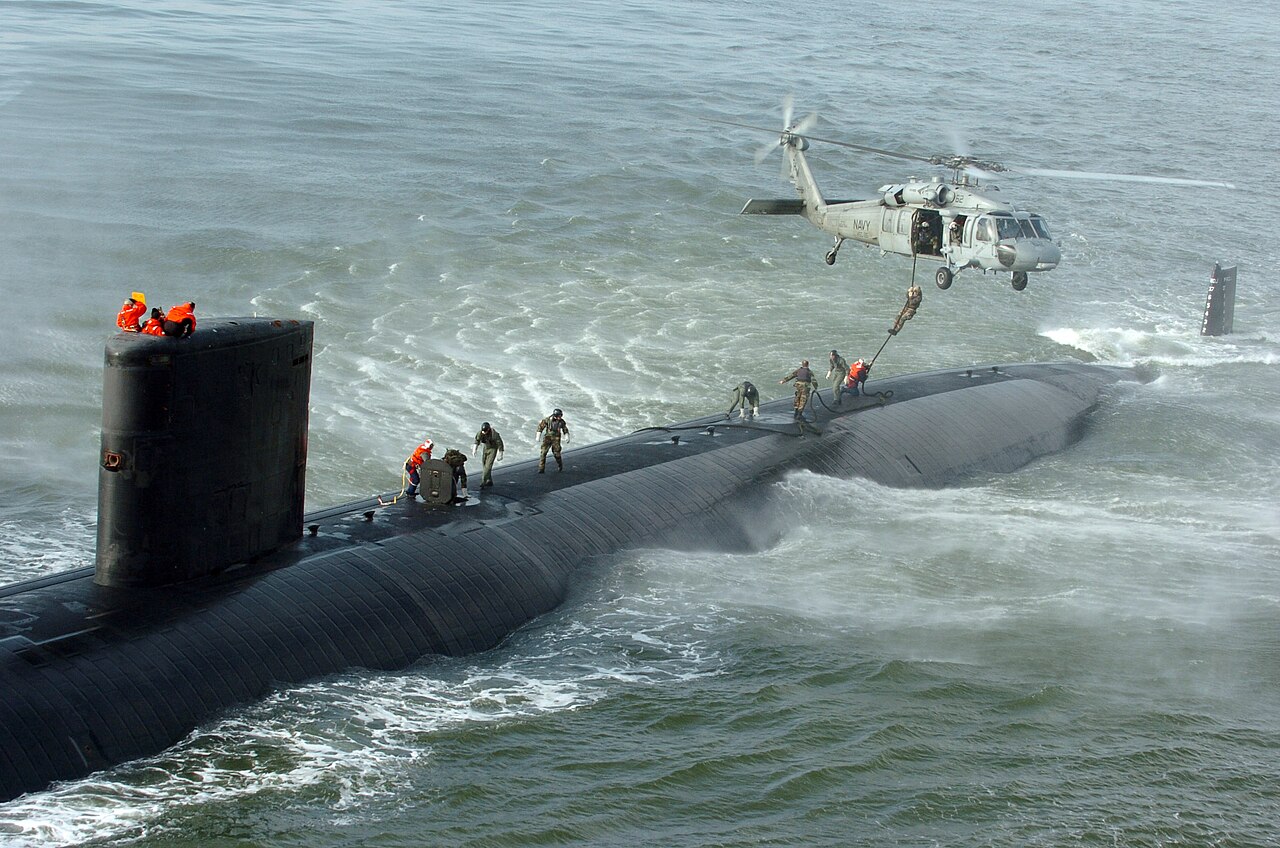
Fast
roping from a Seahawk helicopter to the USS Toledo nuclear powered submarine
Combat with the VC was direct. Unlike the conventional warfare methods of firing artillery into a coordinate location, the SEALs operated close to their targets. Into the late 1960s, the SEALs were successful in a new style of warfare, effective in anti-guerrilla and guerrilla actions. SEALs brought a personal war to the enemy in a previously safe area. The VC referred to them as "the men with green faces," due to the
camouflage face paint the SEALs wore during combat missions.
In February 1966, a small SEAL Team One detachment arrived in South Vietnam to conduct direct action missions. Operating from Nhà Bè Base, near the Rung Sat Special Zone, this detachment
signaled the beginning of a SEAL presence that would eventually include 8 SEAL platoons in country on a continuing basis. SEALs also served as advisors for Provincial Reconnaissance Units and the Lein Doc Nguio Nhia, the Vietnamese SEALs.
SEALs continued to make forays into North Vietnam and Laos and covertly into
Cambodia, controlled by the Studies and Observations Group. The SEALs from Team Two started a unique deployment of SEAL team members working alone with ARVN Commandos. In 1967, a SEAL unit named Detachment Bravo (Det Bravo) was formed to operate these mixed US and ARVN units.
By 1970, President Richard Nixon initiated a plan of Vietnamization, which would remove the US from the Vietnam War and return the responsibility of defense back to the South Vietnamese. Conventional forces were being withdrawn; the last SEAL platoon left South Vietnam on 7 December 1971, and the last SEAL advisor left South Vietnam in March 1973. The SEALs were among the most highly decorated units for their size in the war, receiving by 1974 one Medal of Honor, two Navy Crosses, 42
Silver stars, 402 Bronze Stars, two Legions of Merit, 352 Commendation Medals, and 51 Navy Achievement Medals Later awards would bring the total to three Medals of Honor and five Navy Crosses. SEAL Team One was awarded three Presidential Unit Citations and one Navy Unit Commendation; SEAL Team Two received two Presidential Unit Citations. By the end of the war, 48 SEALs had been killed in Vietnam, but estimates of their kill count are as high as 2,000. The Navy SEAL Museum in Fort Pierce, Florida, displays a list of the 48 SEALs who lost their lives in combat during the Vietnam War.
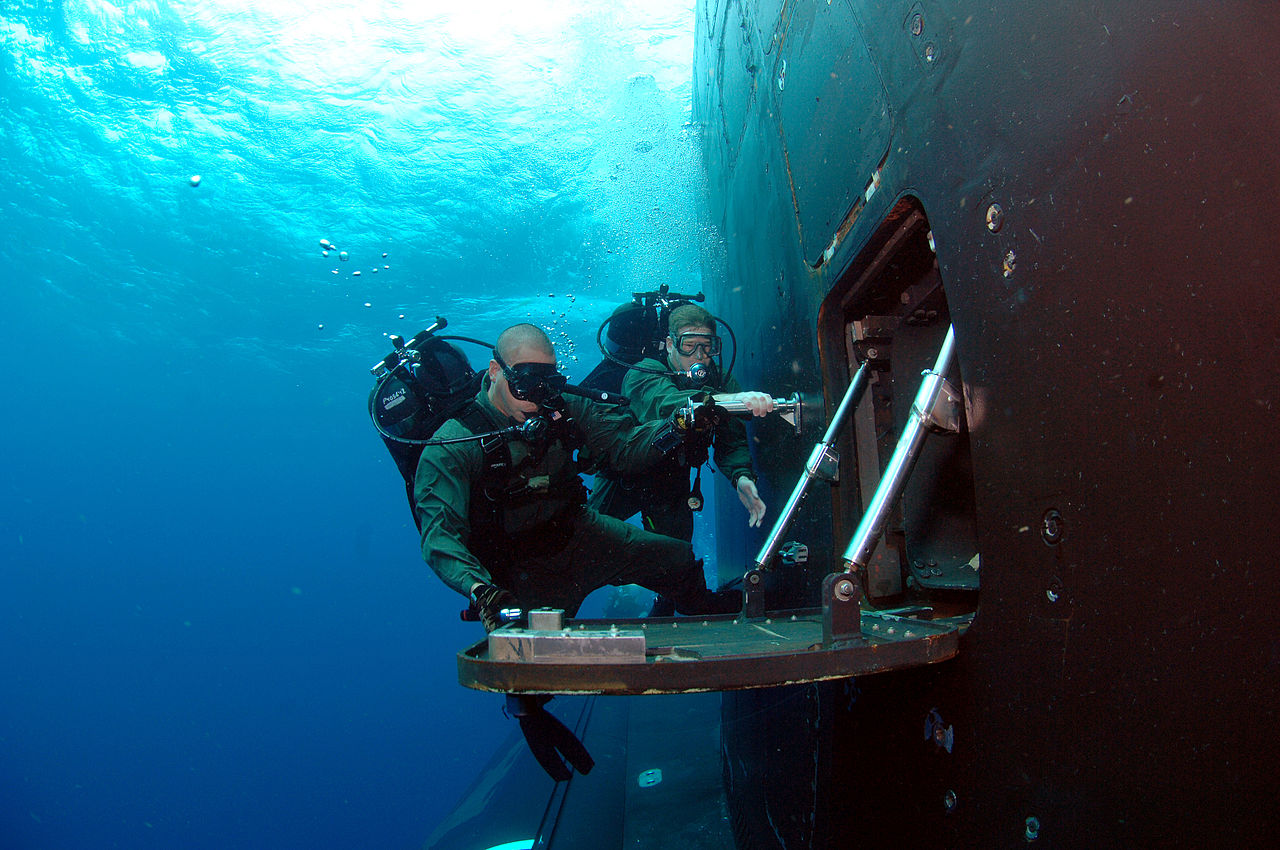
SEAL Delivery Vehicle Team SDV 2 USS Navy Hawaii
WORLD
WAR THREE
In
the event of an international nuclear holocaust, World
War Three will wipe out the White House and most of Washington CD.
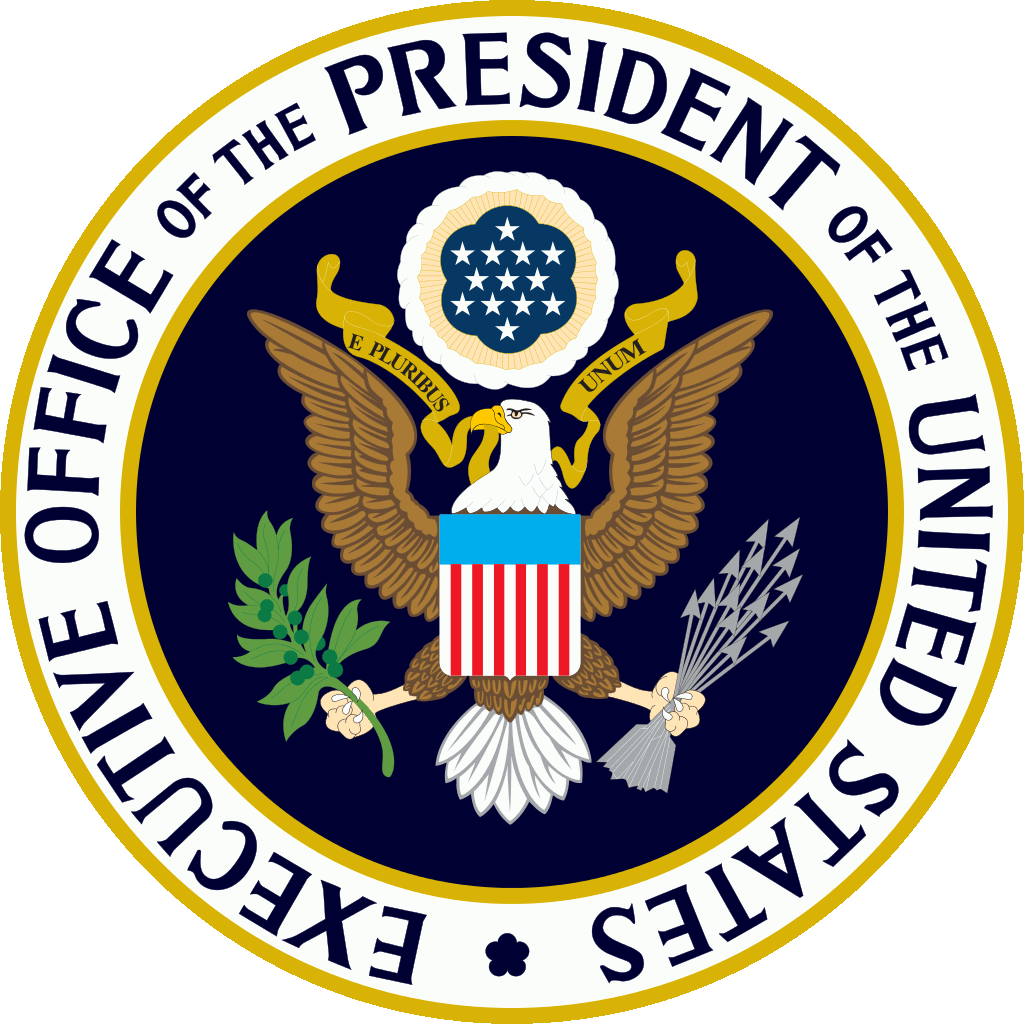
CHAPTERS
| CHARACTERS
| MEDIA
|
MOVIE REF |
SCREENPLAYS
|







